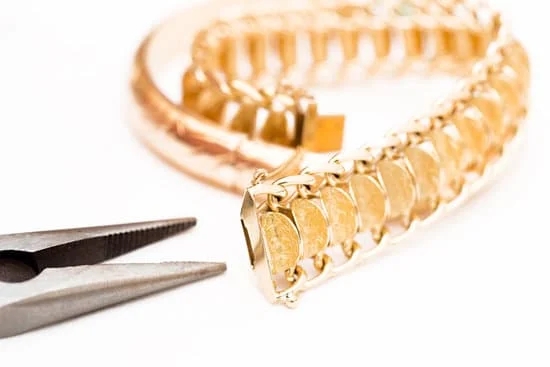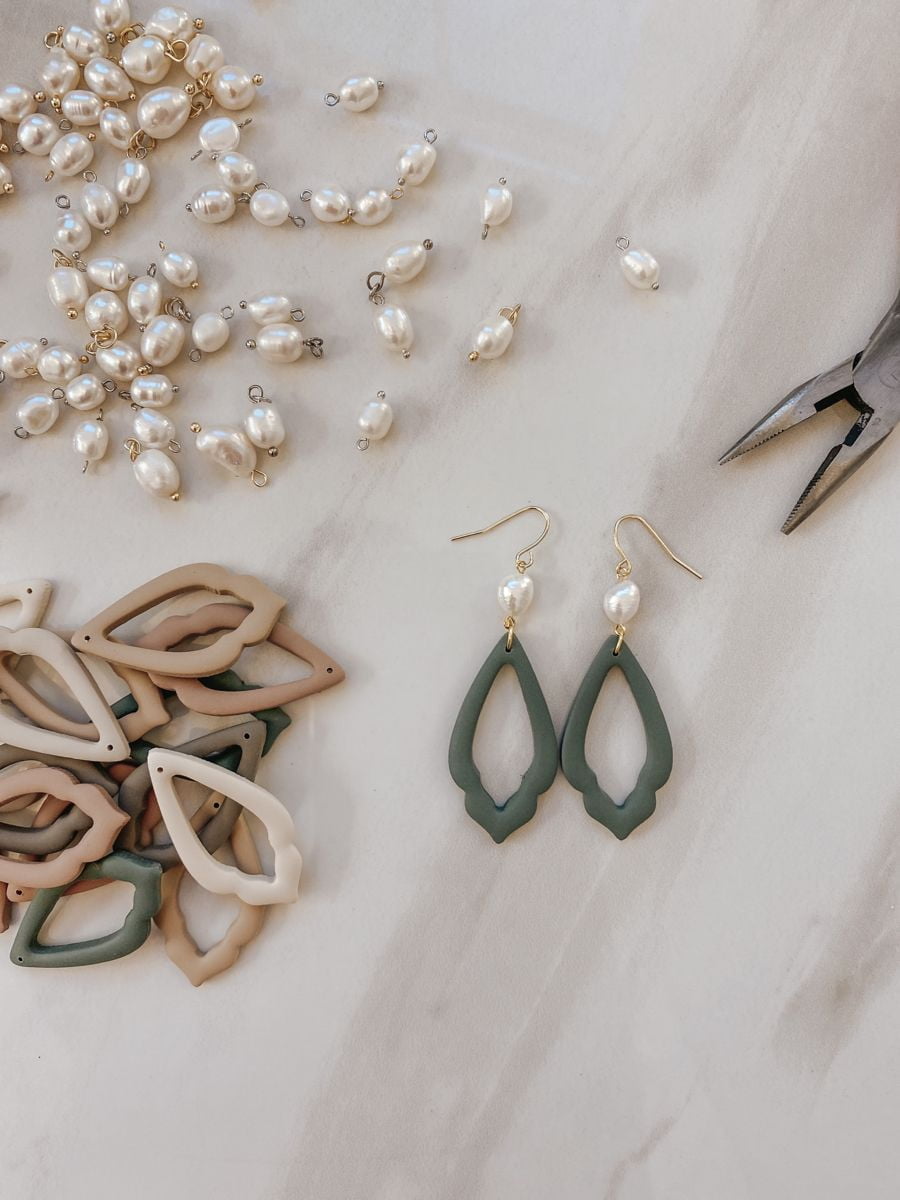The history of jewelry in Africa is a fascinating and integral part of the continent’s rich cultural heritage. From ancient times to the present day, African jewelry has played a significant role in the expression of identity, status, and cultural symbolism. The craftsmanship and designs of African jewelry have also influenced global fashion trends, making it an important aspect of world history.
Ancient African jewelry holds significant historical and cultural importance, with each piece telling its own unique story. The techniques and materials used in the creation of these adornments reflect the diversity and creativity of African artisans throughout the ages.
In this article, we will explore the origins and significance of ancient African jewelry, as well as the evolution of techniques and innovations in jewelry making. We will delve into the symbolic meanings behind these intricate pieces and examine how they continue to influence contemporary fashion trends. Join us on this journey as we celebrate and preserve the timeless beauty and legacy of African jewelry traditions.
Ancient African Jewelry
Early Origins and Significance
The history of jewelry in Africa dates back thousands of years, with evidence of beadwork and metal adornments found in archaeological sites across the continent. From ancient Egypt to the civilizations of West Africa, jewelry has played a significant role in both personal adornment and cultural expression. For instance, in ancient Egypt, jewelry was not only worn for aesthetic purposes but also held religious and symbolic meanings, with certain amulets believed to offer protection or bring good fortune.
Materials and Techniques
The materials used in ancient African jewelry varied by region, ranging from gold and copper to beads made from shells, ivory, and semiprecious stones. Skilled artisans employed techniques such as casting, filigree work, and intricate bead weaving to create elaborate pieces that showcased the wealth and status of the wearer. In some cultures, specific designs and motifs were reserved for royalty or spiritual leaders, further emphasizing the importance of jewelry in societal hierarchy.
Continued Legacy
The significance of ancient African jewelry extends beyond mere ornamentation; it reflects the complex social structures, spiritual beliefs, and artistic traditions of diverse communities throughout history. The legacy of these early forms of adornment can still be seen in contemporary African jewelry-making practices, as artisans draw inspiration from their heritage while incorporating modern aesthetics and techniques. By understanding the origins and significance of ancient African jewelry, we gain a deeper appreciation for its enduring cultural relevance and timeless beauty.
Innovations and Techniques
The history of jewelry in Africa is a rich and diverse tapestry, showcasing the creativity and cultural significance of African civilizations over thousands of years. The evolution of African jewelry making has been shaped by a variety of innovations and techniques that have been passed down through generations, resulting in unique and exquisite pieces that hold both aesthetic and symbolic value.
One of the most significant aspects of the history of jewelry in Africa is the use of traditional jewelry-making techniques that have been handed down through centuries. These techniques often involve intricate patterns, detailed metalwork, and expert craftsmanship, showcasing the skill and artistry of African artisans. From filigree work in North Africa to beadwork in East Africa, each region has its own distinct methods that contribute to the overall diversity of African jewelry.
In addition to traditional techniques, African jewelry has also evolved with the introduction of new materials and influences from other cultures. For example, the trade routes across the continent brought in materials such as gold, ivory, and beads from distant lands, leading to a fusion of styles and designs.
This blending of techniques and materials has contributed to the rich tapestry of African jewelry, with each piece telling its own unique story about the history and culture from which it originated.
Furthermore, innovations in African jewelry making continue to thrive today as modern artisans embrace both traditional methods and contemporary influences. From handcrafted silver earrings to beaded necklaces featuring modern motifs, today’s African jewelry reflects a harmonious blend of past and present. This seamless integration ensures that the legacy of African jewelry making endures while remaining relevant in today’s global fashion landscape.
| Innovations and Techniques | The Evolution of African Jewelry Making |
|---|---|
| Ancient crafting methods passed down through generations | Introducing new materials contributed to a fusionof styles |
| Continuation of traditional methods alongside contemporary influences | Unique combination preserves relevance in today’s fashion landscape |
Symbolism and Meaning
African jewelry holds a deep cultural significance that dates back centuries, reflecting the rich heritage and traditions of the diverse ethnic groups across the continent. From ancient times to the present day, jewelry in Africa has been more than just adornment; it has served as a symbol of status, identity, spirituality, and protection. Understanding the meaning behind African jewelry provides valuable insights into the customs and beliefs of its people.
Traditional Beliefs and Rituals
In many African societies, jewelry is intricately linked to traditional beliefs and rituals. For example, certain pieces may be worn during important ceremonies such as weddings, births, or coming-of-age rituals to symbolize specific virtues or blessings. These pieces often have symbolic designs or patterns that convey messages related to fertility, prosperity, strength, or unity within the community.
Significance of Materials
The materials used in African jewelry also hold great cultural significance. For instance, beads made from different types of stones, shells, or metals may represent specific qualities or connections to ancestral spirits. Additionally, some communities believe that wearing certain materials can provide protection from negative energies or ward off evil spirits. Understanding these material choices adds layers of meaning to African jewelry designs.
Social Status and Identity
In many African cultures, jewelry is also an indicator of social status and identity within the community. Certain pieces may be reserved for members of royalty or tribal leaders, while others signify achievements or roles within society. By examining the types of jewelry worn by different individuals in various contexts, we gain a better understanding of the hierarchical structures and values upheld by different African communities throughout history.
Materials and Designs
The history of jewelry in Africa is as diverse as the continent itself, with each region having its unique materials, designs, and techniques. From ancient times to the present day, African jewelry has played a significant role in expressing cultural identity, social status, and spiritual beliefs. The use of various elements such as gold, silver, copper, beads, shells, ivory, and gemstones has been a common practice across different African societies.
Gold has been a highly prized material for making jewelry in Africa since ancient times. In many African cultures, gold jewelry symbolizes wealth and power and is often used in ceremonies and rituals. The intricate filigree work seen in West African gold jewelry is a testament to the advanced craftsmanship of the artisans. Silver and copper are also widely used in jewelry making, often crafted into bold statement pieces that reflect the artistic creativity of African silversmiths.
Beadwork is another hallmark of African jewelry design, with beads made from various materials including glass, bone, wood, and clay. Beads hold cultural significance and are often used to convey messages or tell stories through their patterns and colors. Shells and ivory are utilized by coastal communities for creating distinctive jewelry pieces inspired by marine life and natural surroundings.
Gemstones such as turquoise, carnelian, amber, and agate have also been incorporated into African jewelry for their vibrant hues and healing properties. The blend of these diverse materials showcases the rich tapestry of African artistry and craftsmanship.
| Material | Significance |
|---|---|
| Gold | Symbolizes wealth and power; used in ceremonies |
| Beads | Convey messages or tell stories; holds cultural significance |
| Shells/Ivory | Inspired by marine life; utilized by coastal communities |
| Gemstones | Incorporated for vibrant hues; believed to have healing properties |
Influence of African Jewelry on Global Fashion and Trends
The history of jewelry in Africa is both ancient and significant, with a rich cultural heritage that has had a lasting influence on global fashion and trends. The intricate designs and craftsmanship of African jewelry have captured the attention of the world, inspiring designers and fashion enthusiasts alike. From traditional adornments to modern interpretations, African jewelry continues to make an impact on the fashion industry.
In looking at the influence of African jewelry on global fashion and trends, it is important to recognize the historical significance of these adornments. Ancient African jewelry served not only as decorative accessories but also as symbols of status, wealth, and cultural identity. The unique designs and use of materials such as gold, beads, shells, and gemstones have been admired for centuries, with many contemporary designers drawing inspiration from these traditional elements.
In recent years, there has been a resurgence of interest in African jewelry among international fashion houses and trendsetters. This renewed appreciation for the artistry and craftsmanship of African jewelry has led to collaborations between African artisans and global brands, resulting in unique collections that celebrate the cultural heritage of the continent. Additionally, the incorporation of African-inspired jewelry into mainstream fashion has contributed to a greater understanding and appreciation for the diversity of African cultures.
- The use of natural materials such as bone, wood, and leather
- Incorporation of traditional techniques such as beadwork and metalwork
- Symbolism behind certain designs or motifs
Preservation and Revival
The history of jewelry in Africa dates back thousands of years, with evidence of intricate beadwork and metalwork found in archaeological digs across the continent. As a result, efforts to preserve and celebrate these traditional jewelry-making practices have gained momentum in recent years. Organizations, museums, and artisans alike are working together to ensure that the rich heritage of African jewelry continues to thrive for future generations.
In many African cultures, jewelry holds deep cultural and spiritual significance. From serving as status symbols to being used in rituals and ceremonies, these adornments play a crucial role in traditional African societies. However, with globalization and modernization, there has been a decline in the practice of making and wearing authentic African jewelry. As a response to this trend, various initiatives have been established to safeguard the traditions of jewelry-making in Africa.
One significant aspect of preserving African jewelry traditions involves documenting the techniques and materials used by different communities across the continent. This includes recording oral histories, collecting samples of traditional jewelry pieces, and studying the symbolism behind each design. By doing so, researchers and historians can ensure that this valuable knowledge is not lost over time.
Additionally, efforts are being made to provide training and resources for young artisans who wish to learn traditional jewelry-making techniques, thereby ensuring that these skills are passed down through generations. The preservation of African jewelry traditions is vital not only for safeguarding cultural heritage but also for empowering local communities economically by promoting traditional craftsmanship.
Contemporary African Jewelry
In recent years, there has been a renewed interest in the history of jewelry in Africa, sparking a resurgence in traditional craftsmanship and contemporary designs. Modern artisans are incorporating age-old techniques and materials to create stunning pieces that celebrate the rich cultural heritage of African jewelry.
One of the most notable trends in contemporary African jewelry is the fusion of traditional techniques with modern aesthetics. Artisans are reimagining classic designs by integrating them with innovative materials and styles, resulting in unique creations that appeal to a global audience. This blend of old and new not only pays homage to the history of jewelry in Africa but also showcases the region’s ability to adapt and evolve its craft.
Furthermore, modern artisans are using their platform to promote sustainability and ethical practices within the industry. By sourcing materials responsibly and supporting local communities, they are not only preserving traditional craftsmanship but also contributing to the economic empowerment of African artisans. This commitment to ethical production adds depth to the beauty of contemporary African jewelry, making it not only visually appealing but also socially conscious.
- Notable trends in contemporary African jewelry
- Fusion of traditional techniques with modern aesthetics
- Use of innovative materials and styles
- Promotion of sustainability and ethical practices
- Sourcing materials responsibly
- Supporting local communities
- Economic empowerment of African artisans through ethical production practices
Conclusion
In conclusion, the history of jewelry in Africa is a testament to the rich cultural heritage and artistic traditions of the continent. From ancient times to the present day, African jewelry has held deep symbolic and cultural significance for its people.
The use of materials such as gold, beads, shells, and intricate designs has not only served as adornments but also as expressions of identity, status, and spirituality. The craftsmanship and techniques passed down through generations have contributed to the enduring legacy of African jewelry.
Throughout history, African jewelry has influenced global fashion and trends, with its vibrant colors, bold patterns, and unique designs captivating the world. The preservation and revival efforts to protect African jewelry traditions are crucial in ensuring that these timeless art forms continue to thrive. By celebrating modern artisans and their unique creations, we can honor the legacy of African jewelry while also embracing its evolution in contemporary times.
In reflecting on the history of jewelry in Africa, it becomes evident that these artistic traditions have left an indelible mark on the world. The timeless beauty of African jewelry continues to inspire awe and appreciation for the creativity and craftsmanship of its makers. As we look towards the future, it is important to recognize and celebrate the cultural significance of African jewelry while supporting efforts to preserve its legacy for generations to come.
Frequently Asked Questions
What Does Jewelry Symbolize in Africa?
Jewelry in Africa symbolizes various cultural and social aspects, such as wealth, status, spirituality, and ancestral connections. It is often used to convey messages about one’s identity, traditions, and beliefs.
What Kind of Jewelry Do Africans Wear?
Africans wear a wide variety of jewelry, including necklaces, bracelets, earrings, rings, and anklets. These adornments are often made from materials like beads, shells, metals, leather, ivory, and stones. Different regions and ethnic groups have their own unique styles and preferences.
What Do African Necklaces Mean?
African necklaces hold different meanings depending on the specific design and cultural context. Some may symbolize fertility or marriage while others represent protection or spiritual beliefs. Necklaces can also serve as a way to honor ancestors or showcase community affiliations.

Welcome to my jewelry blog! My name is Sarah and I am the owner of this blog.
I love making jewelry and sharing my creations with others.
So whether you’re someone who loves wearing jewelry yourself or simply enjoys learning about it, be sure to check out my blog for insightful posts on everything related to this exciting topic!





